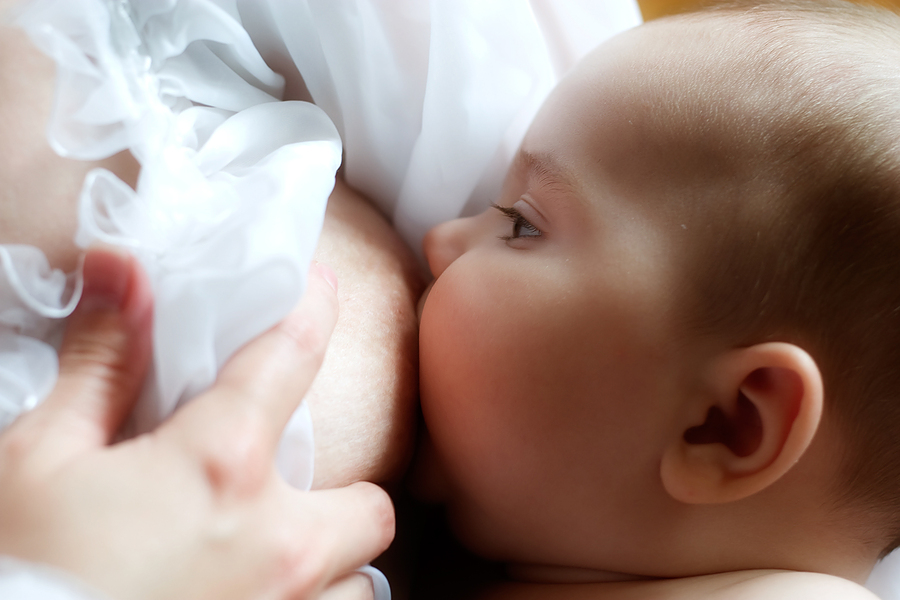Breastfeeding or Bottle Feeding?
Take me to:
Why is Breast Best?
All of the government guidelines try to encourage new mothers to breastfeed – this is because the health benefits are much greater than with formula milk. Breast milk contains antibodies that help fight infection and it is easily digested by baby which cuts down on stomach upsets.
It is a well known fact that breast feeding has been proven to provide all the relevant nutrients and protection that a baby needs to have within the first 6 months post birth. This is to help protect the baby against infections and diseases and greatly reduces the chances of baby becoming ill later in life, as the baby’s immune system is not fully developed from birth.
Breastfeeding not only provides protection for you and your baby but can also enhance and develop the strong bond between you and your baby, and helps mum too in losing some of the weight that has been gained in pregnancy and triggers faster retraction of the womb. When you feed your baby during the night, mothers who breastfeed will get back to sleep much quicker and will sleep deeper than mothers who bottle feed as the woman’s body releases hormones which signal rest.

The types of illnesses and infections that breastfeeding can help protect against are:
-
Eczema Chest & Respiratory Infections
-
Ear Infections
-
Asthma
-
Obesity
-
Urine Infections
-
Necrotizing Enterocolitis (Gastro-Intestinal Infections)
Signs of Successful Breast Feeding:
-
Your baby adopts a comfortable position on the breast (find a comfortable position that it is right for both you and baby!)
-
Your baby’s mouth is in good contact with the nipple
-
You feel the first few sucks from your baby are strong but should feel no pain
-
Your baby is feeding well and sucking well
-
Your baby comes off the breast when they have finished their feed
Benefits to Breast Feeding:
-
Breastfeeding can be good for the mother’s health
-
Develop stronger bond between mother and baby
-
Easier to breastfeed
-
Save time and money as opposed to buying formula milk
-
Can benefit change in society
Bottle Feeding
If you decide to bottle feed here is some information you may find useful:
Buying your feeding bottles: you will need to purchase a number of bottles and teats, as well as sterilizing equipment. A simple, easy-to-clean bottle is probably best.
Sterilizing and safety: make sure your bottles and teats are sterilized.
Preparation: get everything you need ready before you start feeding. Find a comfortable position to hold your baby while you're feeding and relax and use it as a bonding time.
Keep the teat full: when feeding, keep the teatfull of milk, otherwise your baby will take in air. If the teat becomes flattened while you’re feeding, pull gently on the corner of your baby’s mouth to release the vacuum.
Winding: your baby may need to burp sometimes. When your baby does not want any more feed, hold them upright and gently rub or pat their back to bring up any wind.
Discard unused formula: don’t forget to throw away any unused formula or breast milk after the feed.
Hungry: Feed your baby when they’re hungry, and don’t try to force them to finish a bottle. Babies will differ in the amount of milk they take.
Weaning
What is Weaning?
Weaning is the process whereby you introduce your baby to solid foods. Within the first six months, you and your baby will have already created a bond, during breast feeding the baby will have been getting all of their vital nutrients needed. Post six months, you will need to gradually move away from feeding your baby breast milk and replace this with a varied balanced and nutritious diet.
When Should I Start the Weaning Process?
It is recommended by the Department of Health that you should wean from six months onwards. However, you may see signs from your baby that they may be ready to wean earlier than six months, if this is the case, contact your GP or healthcare professional. There may are also be localised weaning classes that you could attend within your community or children’s centre. Find out where the nearest one to you will be and get researching. These classes are a fun and enjoyable way to share ideas with other mums and give you practical menus that you can take away and make within your own home.
How do I Start Weaning?
Start off by offering your baby a little of the blended solid food, you could even offer a little breast milk to reduce their appetite using mashed or pureed foods only. Introducing small amounts of purees, trying out what foods work and what don’t. Making sure that all weaning foods are high in nutrients and fresh in goodness.
What are suitable Weaning Foods to start with?
Many mums worry about the types of foods and products to use that are suitable for weaning. There are some common brands such as Heinz, Plum, Organix which tend to be the favourites. However, you can create your own healthy meals for your baby that are both highly nutritious and full of flavour with no additives or preservatives within, keeping you in charge of your babies health.
Related Articles:
Pregnancy & Childbirth